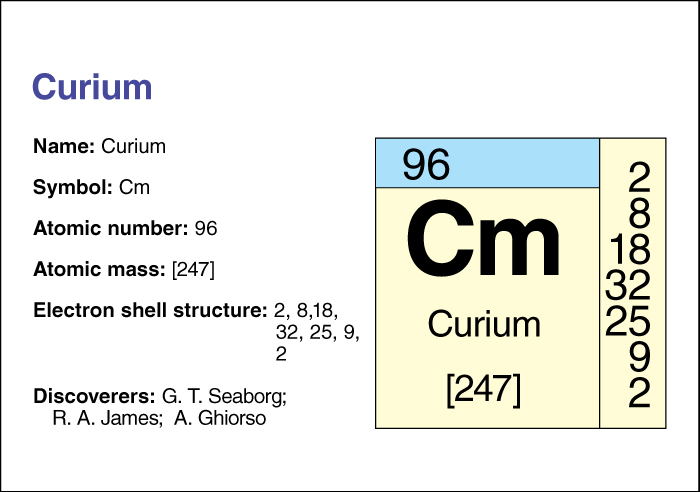Curium, << KYUR ee uhm, >> is an artificially created radioactive element. Its chemical symbol is Cm, and its atomic number (number of protons in its nucleus) is 96. Chemists put curium in the actinide group of transuranium elements. For information on the position of curium on the periodic table, see the article Periodic table.
Curium has 20 known isotopes, forms with the same number of protons but different numbers of neutrons. The most stable isotope has an atomic mass number (total number of protons and neutrons) of 247. That isotope has a half-life of 15.6 million years—that is, due to radioactive decay, only half the atoms in a sample of isotope 247 would still be atoms of that isotope after 15.6 million years. That isotope occurs in amounts too small for most experiments.

Two other isotopes of the element are more readily available. One has a mass number of 244 and a half-life of 18.1 years. The other has a mass number of 248 and a half-life of 348,000 years. Curium melts at 1340 °C. At 20 °C, it has a density of 13.51 grams per cubic centimeter.
Curium was discovered in 1944 by the American scientists Glenn T. Seaborg, Ralph A. James, and Albert Ghiorso. They created curium by bombarding the element plutonium with helium ions (electrically charged atoms) in a machine called a cyclotron. The element is named for the French chemist Marie Curie.
